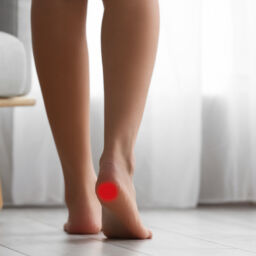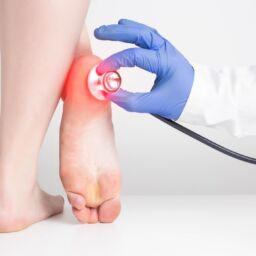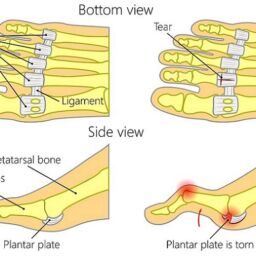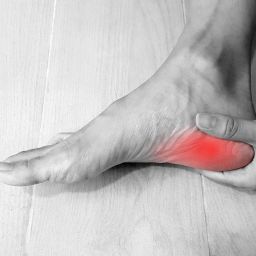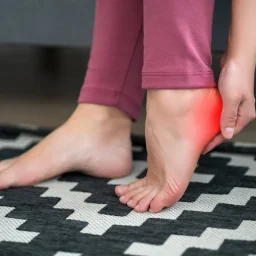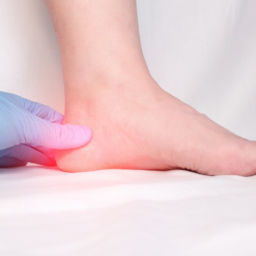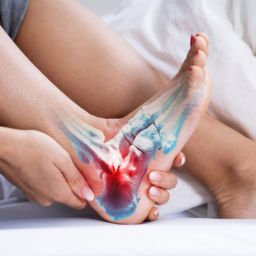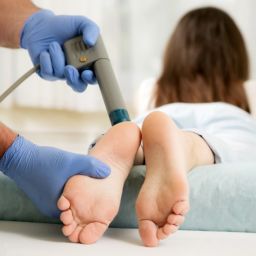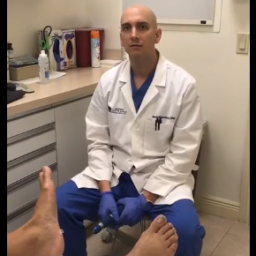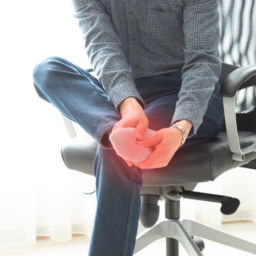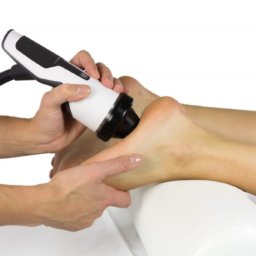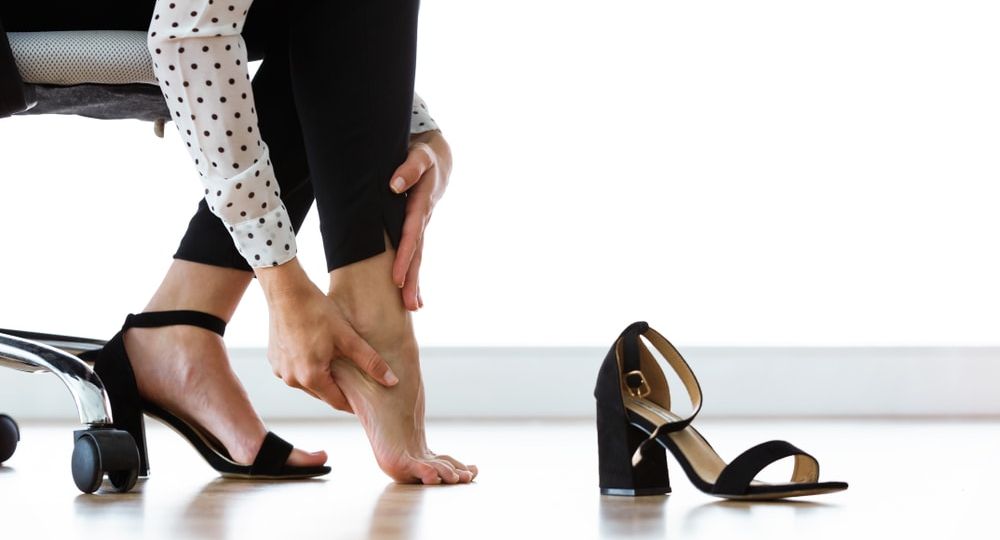
Have you ever had pain that just won’t seem to resolve on its own and thought “maybe I have plantar fasciitis”? While the most common cause of chronic heel pain is plantar fasciitis; it is important to see your podiatrist to get a proper work-up, diagnosis and treatment plan.
There are actually many different causes of heel pain including but not limited to: plantar fasciitis, insertional Achilles tendinitis, peripheral neuropathy, fat pad atrophy, stress fracture in the heel, tarsal tunnel syndrome and bone tumor.
Plantar fasciitis
Plantar fasciitis involves inflammation of the thick band of tissue that runs from the medial tubercle of the calcaneus to the metatarsal heads. The plantar fascia helps to support the arch of your foot and acts as a shock absorber during ambulation. When too much stress and strain is placed on this band of tissue, the body’s natural response is inflammation which results in plantar fasciitis. There are many risk factors which can make a person more prone to developing plantar fasciitis including: pes planus (flat feet), pes cavus (high arched feet), posterior tibial tendon dysfunction, new or increased activity, equinus (tight calf muscles), obesity and repetitive impact activities such as running. While many people with plantar fasciitis have heel spurs, the spurs are not the cause of the heel pain and therefore can be treated without removing the spur.
Insertional Achilles tendinitis
Insertional Achilles tendinitis is an overuse injury of the Achilles tendon causing pain and inflammation at the insertion point onto the posterior calcaneus. Often, patient’s come into the office with pain and a palpable bump on the back of the heel. It is common in women who have worn high heels for many years and people with tight calf muscles.
Peripheral neuropathy
Peripheral neuropathy often presents as tingling, burning, stabbing, numbness and pain in the lower extremities. Oftentimes, the tingling begins in the toes early on, however, as the neuropathy progresses it can cause heel pain. There are many causes of peripheral neuropathy including diabetes, Sjogren’s syndrome, rheumatoid arthritis, inherited disorders such as Charcot Marie- Tooth disease, alcoholism, HIV, kidney disease, hypothyroidism, chemotherapy, vitamin deficiencies and injury to the nerves such as from a car accident or sports related injury.
Fat pad atrophy
Fat pad atrophy is caused by the gradual loss of the tissue under the heel or ball of the foot. This is commonly seen in elderly people and causes significant pain when walking and putting any pressure on the bottoms of the feet. While age is the most common cause of fat pad atrophy, conditions that affect the connective tissues of the feet including lupus, scleroderma and rheumatoid arthritis can also cause fat pad atrophy.
Stress fracture
Stress fracture in the heel is another cause. When you see your podiatrist for heel pain, x-rays are taken in order to rule in or rule out a stress fracture of the heel. The calcaneus is the second most common location for stress fractures in the foot. On physical examination, there is usually pain with lateral squeeze of the calcaneus (heel bone). The symptoms of a calcaneal stress fracture can include swelling, pain in the heel with activity that can become constant over time, difficulty walking and even limping due to pain.
Tarsal tunnel syndrome
Tarsal tunnel syndrome is caused by compression of the posterior tibial nerve that produces symptoms anywhere along the nerve. Symptoms can include: pain, numbness, tingling, burning on the inside of the ankle, heel, arch of the foot, toes and calf. Tarsal tunnel syndrome causes include but are not limited to: severely flat feet, a space occupying lesion within the tunnel such as a ganglion cyst or varicose vein, an injury such as an ankle sprain and systemic diseases like diabetes and arthritis.
Tumors
While rare, tumors of the heel do occur and can be the cause of heel pain. The most common types of tumors in the heel are: unicameral bone cyst and osteoid osteoma. An x-ray in the office, can rule in or rule out a bone tumor in the heel. Unicameral bone cysts are one of the most common benign bone tumors that affect children. Often, unicameral bone cysts are not symptomatic. If symptomatic, the possibility of pathologic fracture should be suspected. In a patient with osteoid osteoma, the symptoms tend to be more pronounced in the evening, but the pain is relieved with aspirin. It is most common in children and young adults between the ages of 10-19.
If you are having heel pain, make an appointment with one of our podiatrists at Certified Foot and Ankle Specialists. We are ready to get you back on your feet – pain free!
Certified Foot and Ankle Specialists – Palm Harbor, Florida
